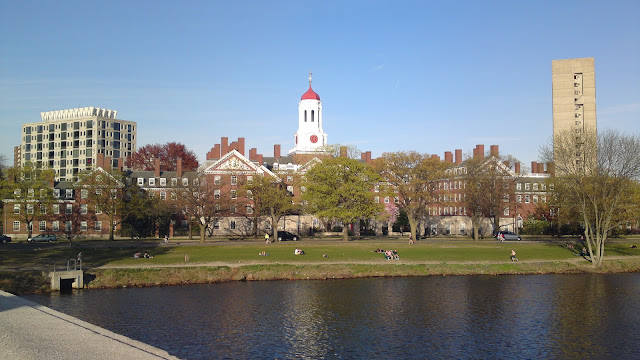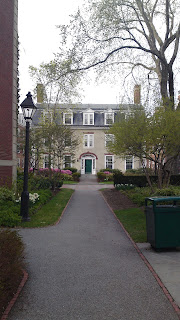 |
| Spring is finally here! |
Spring
At last spring is here! As if on cue, students and residents lazed by the Charles River and soaked in the first rays of the spring sun. From a dreary gray and cold place, Boston seems to have come alive. People are jogging at the park, biking at the trails and basking in the glorious sun. It's such an amazing site to wake up one morning and see the canvass completely changed to bright greens and colorful blooms. I do hope it stays this way. Being accustomed to a tropical climate, this is nirvana for me.
Lessons from School
In as much as I'd like to go out and enjoy the warm sunshine, I will have to stay indoors and enjoy the intellectual sunshine from within the confines of our classroom. The course has shifted to a higher gear, if this goes on my brain will implode. Along with it come more sleepless nights, frayed nerves and at least for me, missed breakfasts. Working late nights has left me with the stark choice of more sleep or breakfast. I have chosen the former and to ensure that I get a modicum of sustenance, I would just pass by the snack bar in the morning and grab a banana or bread and coffee (I swear I've never drank this much coffee in my life). It's usually enough to sustain me until lunch.
I'll go straight to the point today, since there is hardly anything much to share. Another two full days of classes indoors have once again yielded a treasure of learnings.
Operations:
- Excellent execution and mediocre (not lousy) strategy will beat mediocre execution and excellent strategy
- Putting in place a winning operations structure prevents people from doing ordinary work since they will have no choice but to perform and eventually assimilate superior work processes and culture
Marketing:
- Arbitrating market information is the key to success over competition
- Follow the consumer journey and you won't go wrong with your marketing innovations
- Emerging market segmentation needs to look at product features, quality and pricing juxtaposed with the competitive context
Business, Government and the International Economy:
- China and the US are in a tight interlock brought on by their overdependence on each other, it will take significant time and effort to extricate one from the other
- China is trying to flex its muscles and assert its independence from the US since it has realized rather belatedly that its export-led growth has made it too over-exposed and vulnerable to the US
- Russia on the other hand, did not get the support it needed from the US, and instead rebuilt its institutions on its own
- The US on the other hand, was much too busy living in the shadows of the cold war that it failed to recognize the unique opportunity to turn Russia into an ally instead of a foe
- Russia, Singapore, China and India curtailed social and political freedoms (in varying degrees) in order to put their countries on the path to social growth
- Key Question: What is society prepared to surrender in exchange for prosperity?
I would have wanted to dwell more on this question but I suppose Prof. Dick Vietor will be revealing the answer to this somewhat vexing question.
In the meantime, many thanks to our insightful and dynamic professors for the invaluable knowledge and frameworks they have taught and will continue to impart to all of the students here at AMP batch 182.
I suppose I'll stop here for now. It's getting late and I still have a ton of cases to review.
Note: My blogs are a week off and as of this writing, it's freezing cold once again. I guess I shouldn't complain, Asia is going through a heat wave with temperatures hitting 40C, in some cities. Things are so busy over here that I only get to write occasionally, so I apologize if things are not current.































































